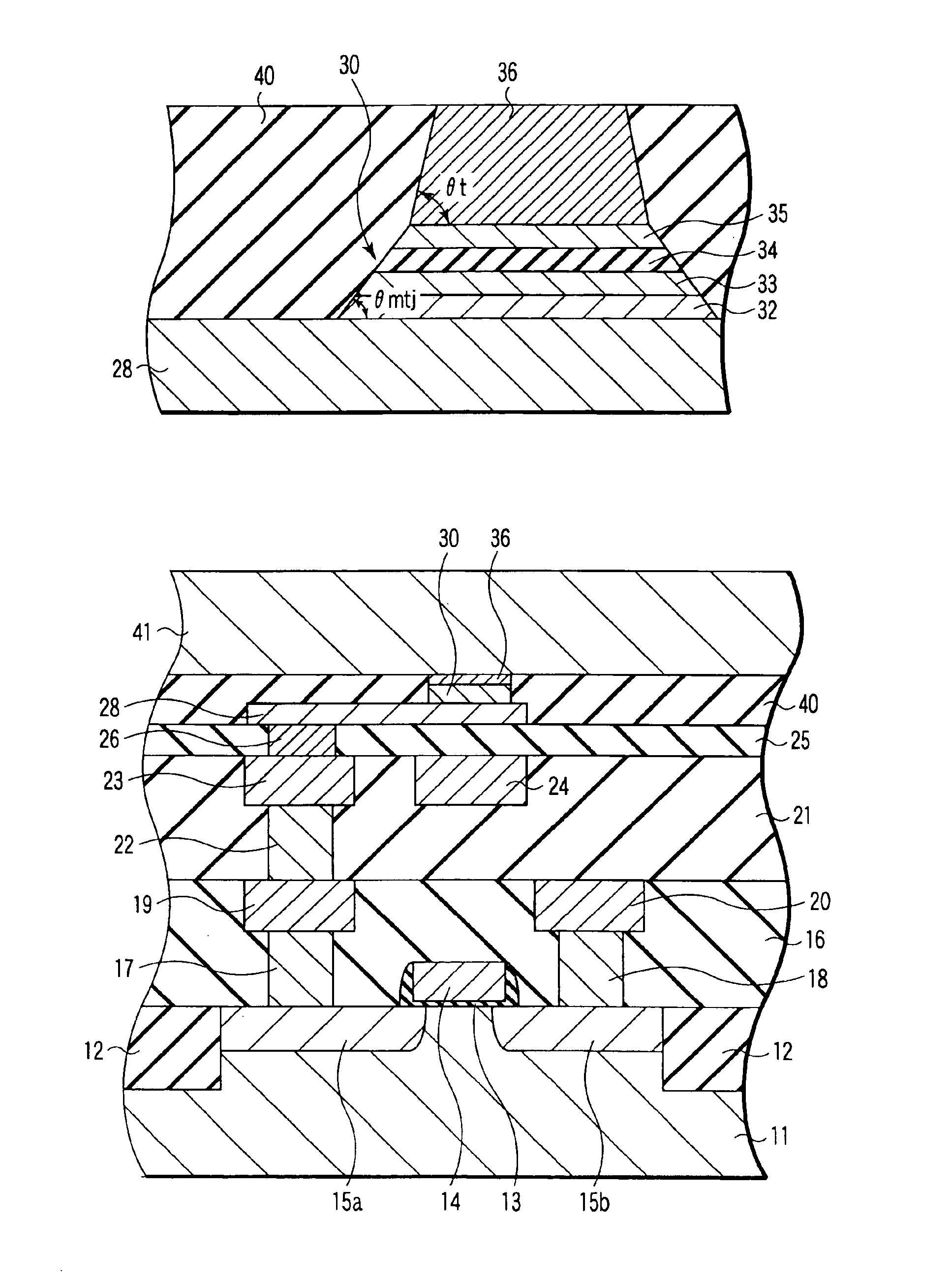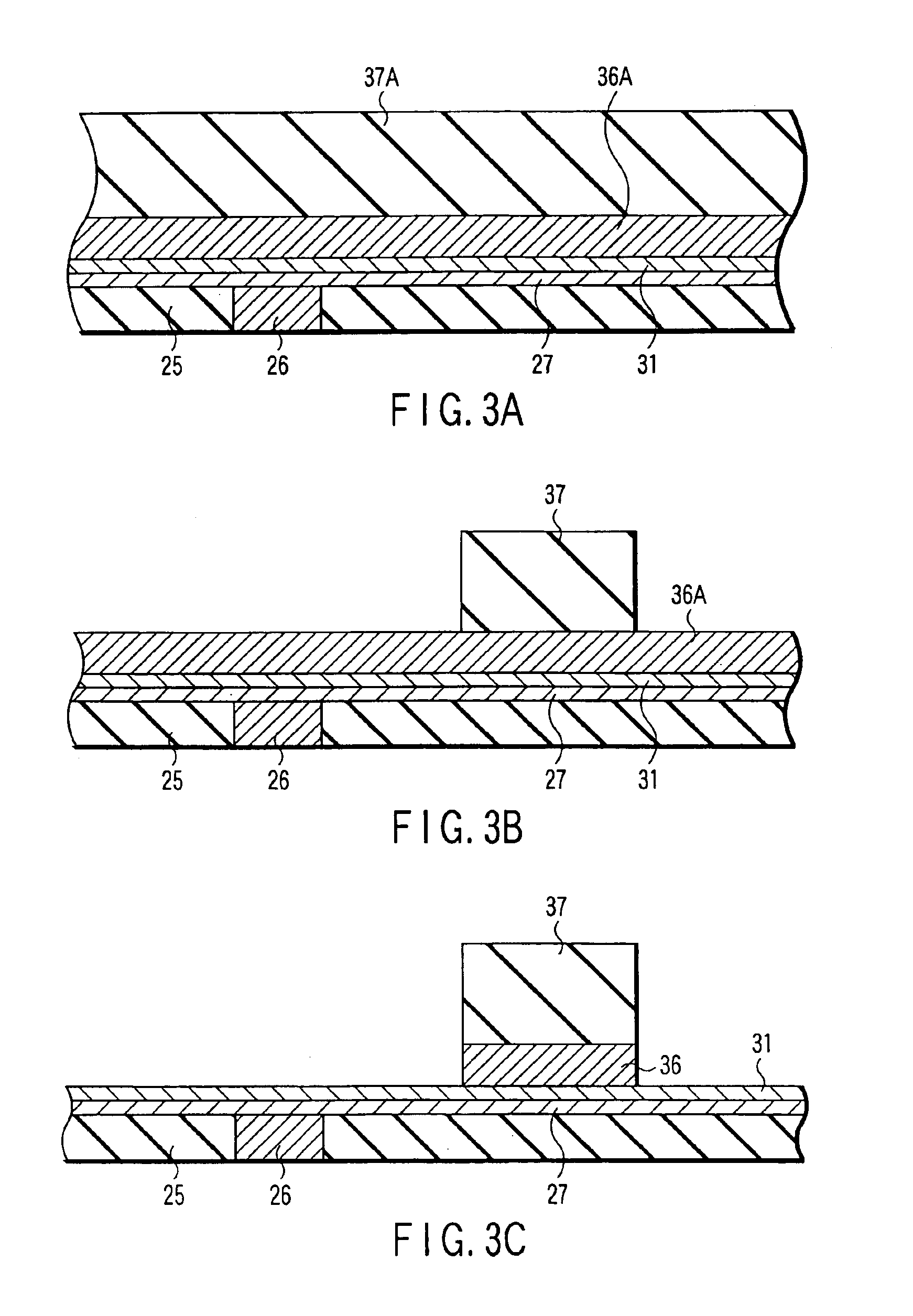Magnetic memory device and method of manufacturing the same
a memory device and magnetic technology, applied in the direction of magnetic bodies, semiconductor/solid-state device details, instruments, etc., can solve the problems of low vapor pressure, difficult processing in the ordinary semiconductor manufacturing process, and insufficient chemical reaction ra
- Summary
- Abstract
- Description
- Claims
- Application Information
AI Technical Summary
Problems solved by technology
Method used
Image
Examples
second embodiment
[0175]In the second embodiment, the taper angle of the hard mask 36 is made greater than that of the MTJ element 30. Thereby, the insulation film on the side wall of the hard mask remains due to the angle dependency of the etching rate, which quickly decreases on the large incidence angle side. Therefore, the metallic contamination source to the side wall of the MTJ element can be suppressed.
[0176]On the other hand, as will be described below, the taper angle of the hard mask may be made smaller than the taper angle of the side wall of the MTJ element.
[0177]A magnetic memory device according to a third embodiment of the present invention and a method of manufacturing the magnetic memory device will now be described referring to FIGS. 17A through 18C. In the third embodiment, the parts common to those in the above-described second embodiment are denoted by like reference numerals, and a detailed description thereof is omitted.
[0178]In FIG. 17A, a lower electrode 28, a magneto-resisti...
third embodiment
[0183]In the third embodiment, the etching for forming the MTJ element 30 shown in FIG. 18A is effected by Ar ion beam etching using the hard mask 36 as a mask. The Ar ion beam etching is performed, for example, under conditions that the voltage of the ion beam is 400 V, the ion beam current amount IB=100 mA, the ion acceleration voltage VB=100 V, and the incidence angle θ to the normal line of the substrate is about 45°. A contaminant conductive film (not shown) is formed on the taper surface of the MTJ element 30.
[0184]Thereafter, as shown in FIG. 18B, a protection film 39 serving as an insulation film is deposited by, e.g. reactive sputtering, on the entire surfaces of the lower electrode 28, MTJ element 30 and hard mask 36.
[0185]In particular, in order to enhance the coverage on the side surface of the hard mask 36, the protection film 39 is formed by bias sputtering, using, e.g. SiO2, to a thickness of about 80 nm. Next, Ar ion etching is performed over the entire upper surface...
PUM
| Property | Measurement | Unit |
|---|---|---|
| taper angle | aaaaa | aaaaa |
| angle | aaaaa | aaaaa |
| angle | aaaaa | aaaaa |
Abstract
Description
Claims
Application Information
 Login to View More
Login to View More - R&D
- Intellectual Property
- Life Sciences
- Materials
- Tech Scout
- Unparalleled Data Quality
- Higher Quality Content
- 60% Fewer Hallucinations
Browse by: Latest US Patents, China's latest patents, Technical Efficacy Thesaurus, Application Domain, Technology Topic, Popular Technical Reports.
© 2025 PatSnap. All rights reserved.Legal|Privacy policy|Modern Slavery Act Transparency Statement|Sitemap|About US| Contact US: help@patsnap.com



